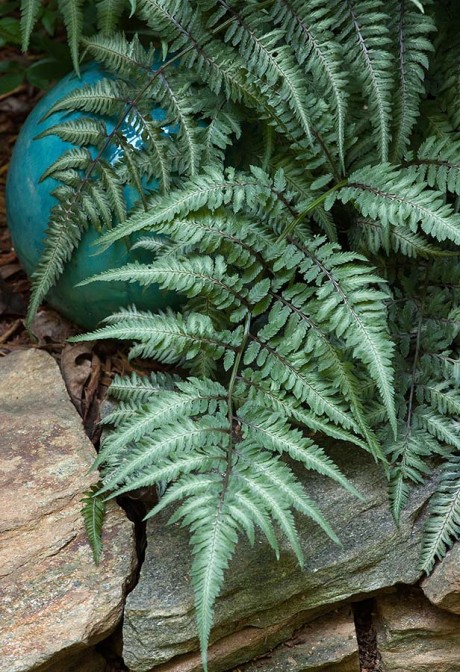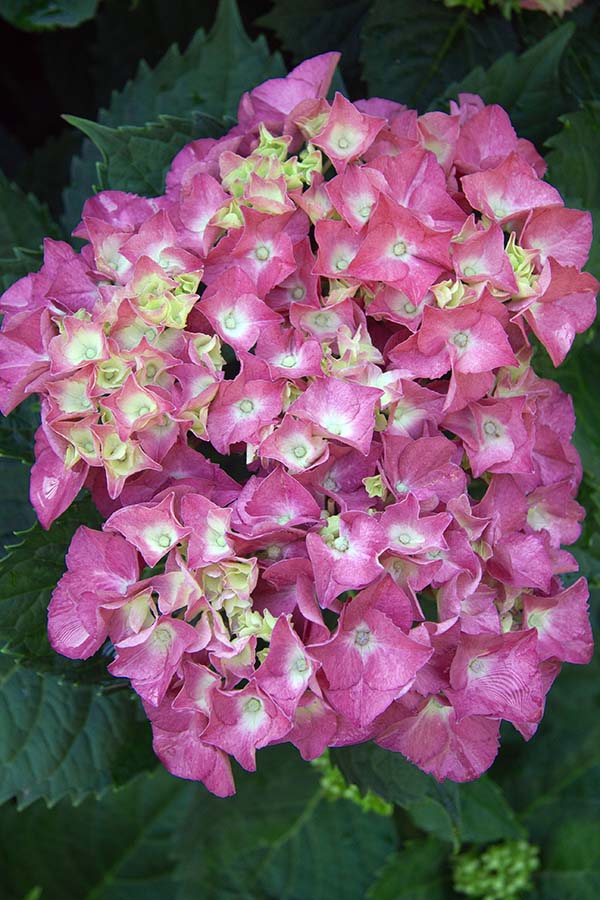Made for the shade
Japanese painted fern
By L.A. JacksonLooking for a dependable plant capable of lighting up shady spots in your spring and summer garden? Look no further than Japanese painted fern (Athyrium niponicum). This easy-to-grow, deer-resistant perennial sports bright, colorful fronds, which can be up to 18 inches long, in partial to fully shaded spots. Foliage tints are most intense in the spring, and, while they can fade slightly in summer’s heat, their beauty cannot be denied.
Moist — not soggy — soil suits this Oriental import best. It can stand some drought, but will survive rather than thrive in arid conditions, so supplemental waterings when the rains don’t come is advised. However, this plant doesn’t have to be babied through the growing season. It is tough, and as long as moisture needs are met, the Japanese painted fern will even make a pleasing addition to shady container plantings and hanging baskets.
These fancy ferns don’t require a lot of fertilizer. So, if you have the need to feed, use either an organic or time-release fertilizer at half the recommended rate of other perennials.
Although Japanese painted ferns will do well in a garden’s more shadowy realms, don’t treat them like botanical vampires. In fact, if they are situated in an area that receives a few hours of early morning sun, their colors tend to have more pop.
As long as a Japanese painted fern has it made in the shade, especially in the afternoon when the sun is at its strongest, it can stand our summers. In addition, being rated for USDA Zones 3–8, this beauty is a reliably hardy perennial that can weather the worst of typical Carolina winters. Also, it spreads slowly by creeping rhizomes to form colony clumps that can be divided in the spring.
For many years, the selection ‘Pictum’ has been the prize catch for Japanese fern fanciers, and no wonder — this showoff has variegated green fronds heavily dusted with silver and supported on wine-red stems, making for a real tricolor treat.
Because ‘Pictum’ has been so popular, other new introductions have been developed, including the aptly named ‘Ghost’ and the equally pale-but-pretty ‘Branford Beauty’. Also consider ‘Ursula’s Red’, which shows off deep pink veins and a smoky green center that is flanked by silvery tips. And ‘Burgundy Lace’ is a real stunner with light green fronds heavily splashed by silver and purple stripes.
Garden to do’s
- Annual vegetable and flower beds should be rejuvenated by being tilled. While the dirt is being turned over, it is not a bad idea to mix in liberal amounts of compost, leaf mold or other decayed organic matter to add natural nutrients into the soil.
- If you are planning to till garden soil, grab a handful of dirt first and squeeze it. If it holds together in a tight ball, it is too wet, and if you turn the soil over in such condition, your first harvest of the season will be a bumper crop of dirt clods.
- Summer blooming woodies such as althea, buddleia, vitex, crepe myrtle and pomegranate can be pruned at the beginning of March to stimulate more flower production later in the growing season.
- Allow the foliage of spring-flowering bulbs to die back naturally so the plants efficiently store nutrients for the next growing season.
- Migratory birds should be returning soon, so welcome them back by cleaning old nests and debris out of bird houses and giving the bird bath a good scrubbing.
- Camellias blooming like crazy now? Enjoy, but be sure to rake up and discard any fallen flowers to help prevent the soil-borne camellia petal blight.
- Easy on the pruners! Not all trees and shrubs benefit from a spring shearing. Wait to snip early-blossoming beauties such as azalea, camellia (Camellia japonica), Carolina jessamine, forsythia, flowering quince, spirea, viburnum, mock orange, weigela and Oriental magnolia until after their flowers have faded.
- Cool-season veggies such as leaf lettuce, mustard greens, sugar snaps, radishes, spinach, onions, kale and potatoes can be started at the beginning to the middle of the month. Also, beets, broccoli, cauliflower and Chinese cabbage can be started by the third to fourth week of this month.
-
Share this story:





Comments (2)
Nancy De Nyse |
June 03, 2016 |
reply
L.A. Jackson |
June 03, 2016 |
reply